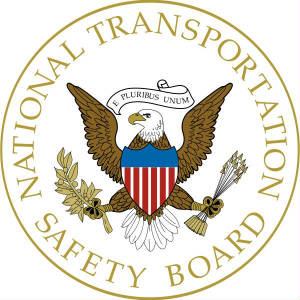Travel Tips
Former NTSB Top Brass Discusses Buffalo Crash Investigation
 Peter checked in with Greg Feith, former lead investigator of the National Transportation Safety Board (NTSB), to discuss the recently released cockpit voice recorder transcript of Continental Flight 3407, the Buffalo-bound flight that crashed in icy weather on February 12, killing all 44 passengers and four crew on the plane and one person on the ground.
Peter checked in with Greg Feith, former lead investigator of the National Transportation Safety Board (NTSB), to discuss the recently released cockpit voice recorder transcript of Continental Flight 3407, the Buffalo-bound flight that crashed in icy weather on February 12, killing all 44 passengers and four crew on the plane and one person on the ground.
PG: Just to set the stage, when the NTSB investigates any sort of incident, whether it’s a airplane crash, a train incident or something on a cruise line, you have to rule things out before you can rule things in. There are different factors involved, including training, weather, engine performance, air traffic control.
PG: There are so many different factors that go into trying to find the probable cause. In this case, investigators had an early indication from almost day one. When they got the cockpit voice recorders out, they realized there might be something wrong here in almost an embarrassing way regarding pilot training and cockpit discipline.
As we began to see what was going on, it opened the door in terms of commuter airline pilots, their salary levels, their training, and pilot fatigue issues. These pilots cannot even afford to live in the cities where they work so they’re basically taking red-eye flights to get to their job, and then have to operate as alert pilots. Talk about bad news.
 GF: It is, and besides all those human factors, there’s also another element that wasn’t fully explored to the depth that it should have been. There is a piece of equipment that should have been installed on that airplane that probably would have prevented this accident—the slow-speed alerter. It was not required, but the NTSB has been recommending it.
GF: It is, and besides all those human factors, there’s also another element that wasn’t fully explored to the depth that it should have been. There is a piece of equipment that should have been installed on that airplane that probably would have prevented this accident—the slow-speed alerter. It was not required, but the NTSB has been recommending it.
It really was a prominent issue in the Senator Paul Wellstone accident in Minnesota in which two pilots on a charter flight allowed the airplane to get too slow and crashed on the approach. Had they had a slow-speed alerter, it would have alerted the crew that they were going to have an aerodynamic stall unless they did something. That piece of equipment wasn’t installed on this airplane but it probably would have given the crew a heads up well before they got to the stall event.
Check out Peter’s Initial Interview With Greg Feith on the Crash of Flight 3407
PG: This is what gets me angry. The men and women at the NTSB do a great job of investigating and coming up with probable causes and then make recommendations to the regulatory body which, in this case, was the FAA. It’s a no-brainer. You need this piece of equipment on the plane, and then we have a repeat of the same tragic incident, and nothing has been done. There’s got to be someone held accountable for this.
 GF: I agree a thousand percent. We’ve seen it over the years. We’ve lost thousands of people, we’ve made numerous recommendations before and after, and again we still don’t have full compliance with that recommendation. On Continental Connection Flight 3407, the co-pilot was 24 years old, making less money a year than a janitor. She could not afford to live where she was based, had to take two red-eye flights back to back in order to make her flight, and had no experience in icing conditions. Meanwhile, the pilot had not been trained to operate a plane in those conditions—and in fact had failed numerous tests which should have disqualified him from sitting in the left seat.
GF: I agree a thousand percent. We’ve seen it over the years. We’ve lost thousands of people, we’ve made numerous recommendations before and after, and again we still don’t have full compliance with that recommendation. On Continental Connection Flight 3407, the co-pilot was 24 years old, making less money a year than a janitor. She could not afford to live where she was based, had to take two red-eye flights back to back in order to make her flight, and had no experience in icing conditions. Meanwhile, the pilot had not been trained to operate a plane in those conditions—and in fact had failed numerous tests which should have disqualified him from sitting in the left seat.
 You have to remember that aviation is very complex. The best way to explain it is that if you take a driving test, and you do all the things required except you knock over the cones for the parallel parking. You do a little bit of training, go back, pass the test, and get your license. Does that mean you’re a bad driver? No. Same thing with pilots.
You have to remember that aviation is very complex. The best way to explain it is that if you take a driving test, and you do all the things required except you knock over the cones for the parallel parking. You do a little bit of training, go back, pass the test, and get your license. Does that mean you’re a bad driver? No. Same thing with pilots.
A lot of pilots have a “disqual.” There are so many aspects that they have to worry about and perform, if you miss one part of it, they send you back for retraining and then you come back and get recertified. So that isn’t necessarily a good evaluator of a pilot’s skills and knowledge.
But, these two crew members were not plugged in to the dynamic situation they were flying in, which was this icing condition. The fact that they were in it for a very long time, they had a total disregard for the gravity of the situation—they were off on their speeds by almost forty knot—they had a lot of extraneous conversation not related to flight, all of those things lead to bad operational discipline. You have to look at the airline, its corporate culture and how they enforce pilots to perform as they are required and as they have been trained. And none of that took place which was evident in the public hearing last week.
PG: When you read those transcripts, it becomes painfully obvious that the concept of sterile cockpit conversation only relating to the flight was not followed at all.
 GF: Absolutely. We know that pilots do talk. You can’t sit in a cockpit and not have a conversation about things other than flying. That’s just human nature. However, there is a rule in place that when you get to a certain altitude, you shift your attention from everything else to flying this airplane. Period.
GF: Absolutely. We know that pilots do talk. You can’t sit in a cockpit and not have a conversation about things other than flying. That’s just human nature. However, there is a rule in place that when you get to a certain altitude, you shift your attention from everything else to flying this airplane. Period.
In this particular instance, they should have extended that a little higher since they were in icing conditions immediately after takeoff. They should have stayed focused on what they are doing because they were flying in ice. You’ve got to stay plugged in—it was only a 30- or 40-minute flight. You can have coffee and talk about your personal life on the ground later on, but you don’t need to do it in the cockpit.
PG: The other two issues that have come up in the hearing are crew rest and crew salary. Pilot fatigue is a big deal.
 GF: Pilot fatigue has been an issue for a very long time. Back in 1993 I investigated the first commercial aviation accident attributed to fatigue. Pilot’s fatigue was cited as the cause. We’ve been addressing the issue for 25 years.
GF: Pilot fatigue has been an issue for a very long time. Back in 1993 I investigated the first commercial aviation accident attributed to fatigue. Pilot’s fatigue was cited as the cause. We’ve been addressing the issue for 25 years.
NASA has done numerous studies with commercial pilots as well as military pilots. We’ve written numerous recommendations from the NTSB to the FAA, and the FAA admitted that again, they still have not heeded the science in rewriting the regulations that are archaic. A pilot can be on duty 16 hours. Just imagine 16 hours. You get up at 9 o’clock in the morning, and at 9 o’clock at night, you start to get tired. At midnight, you’re basically still working. How do you feel at midnight?
PG: I hate the use the term déjà vu, but we’re back all over again. This crash seemed like a perfect storm of issues of pilot fatigue, pilot training, sterile cockpit, and proper equipment to be carried in the plane. The frustration I feel as a journalist and a traveler must be tenfold for you who has to investigate these things. The only thing you can do is make recommendations, and if the FAA doesn’t follow through on them, we’re going to have an accident repeating itself again.
 GF: It is very frustrating. We aren’t finding anything new. We’re seeing the same thing over and over again. We know what the solutions are, it’s just trying to get them implemented that’s the frustrating part.
GF: It is very frustrating. We aren’t finding anything new. We’re seeing the same thing over and over again. We know what the solutions are, it’s just trying to get them implemented that’s the frustrating part.
By Peter Greenberg from Peter Greenberg Worldwide Radio.
Previous coverage of the crash of Flight 3407:
- The Crash of Flight 340: Pilots Weigh In
- Initial Interview With Greg Feith on the Crash of Flight 3407
- Continental Plane Crash Kills 50
- Ice, Autopilot Examined as Possible Causes for Buffalo Plane Crash
Read more about air travel in our Airlines & Airports section.
Learn more about keeping safe with our Travel Safety & Security category.












